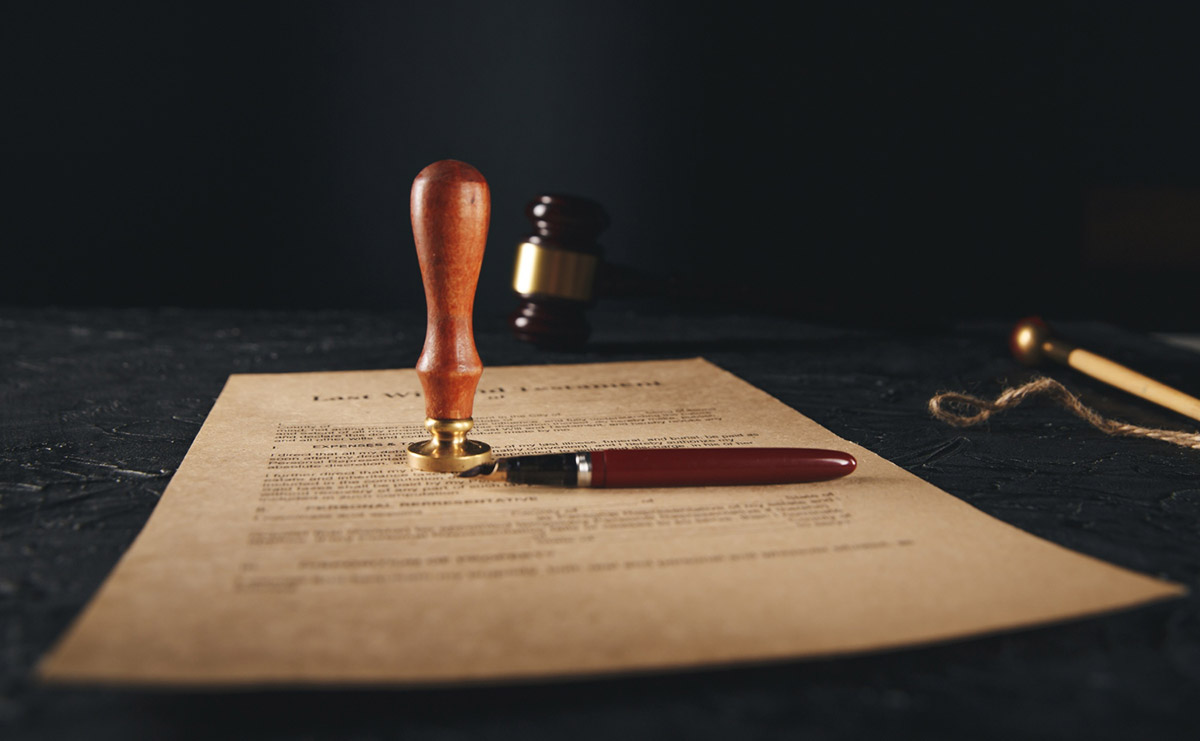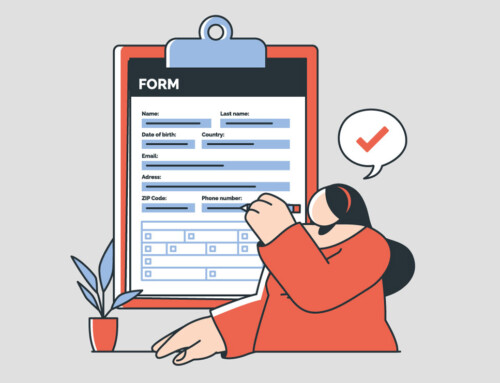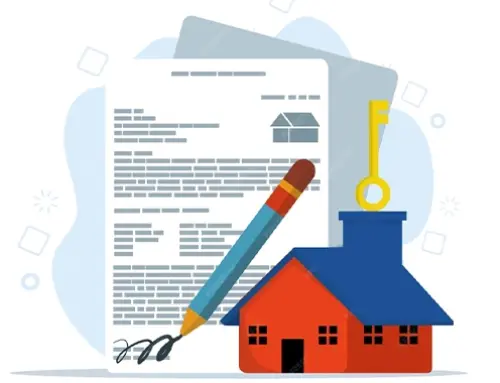Contents
Crafting Effective Legal Memoranda: A Step-by-Step Guide
Legal memoranda are a cornerstone of legal practice, serving as a means to communicate research and analysis on complex issues within a law firm, government agency, or other legal setting. Well-crafted memorandum of law serves as an objective, stand-alone document that distills the relevant law, key facts, and likely outcomes for a particular legal question. Unlike court briefs or advocacy letters, an internal memo is meant to inform, not argue – it maintains an impartial tone, presenting both strengths and weaknesses of the issue so that sound decisions can be made. Legal professionals (especially new associates) and law students alike must master memorandum law writing because it demonstrates rigorous legal research, clear thinking, and effective communication. Senior attorneys often judge a junior lawyer’s value by the quality of their memos – a memo that merely tells a partner what they already know adds little value. On the other hand, a memo that provides fresh insight, thorough analysis, and practical guidance will be valuable and well-received
This guide provides a step-by-step approach to drafting practical legal memoranda. From understanding the memo’s purpose and audience to polishing the final document, each step below highlights best practices drawn from authoritative legal writing sources. By following these steps, legal professionals and students can produce clear, organized, and reliable memos.
Step 1: Know the Purpose and Audience of Memorandum of Law
The first key to a practical memorandum of law is awareness of its purpose and audience. Always identify who will read the memo and why it’s being written before you begin. A memo for an internal senior attorney may differ significantly from a client-facing summary or a court brief. Tailor the tone, depth, and terminology to the needs of your reader. For instance, a memorandum law prepared for a senior partner at a law firm might delve into technical analysis and utilize accepted legal terms of art, whereas a memo or letter intended for a client should prioritize clarity, using plain language and explaining legal concepts without resorting to jargon. Likewise, consider the document’s objective: an objective office memo will neutrally analyze the law, in contrast to a persuasive brief which advocates for a position.
Keep in mind what your reader is likely already familiar with. An assigning attorney or professor will usually be familiar with the general area of law. They expect you to focus on the specific questions and problem areas that need resolving. Avoid spending pages on basic legal principles the reader understands; instead, concentrate on the mission-critical issues and facts that are genuinely in dispute or uncertain. By aligning the memo’s scope and tone with the audience’s needs, you ensure your work is relevant and valuable from the outset.

Step 2: Conduct Thorough Legal Research
Impactful legal memoranda are grounded in thorough research and analysis. The process begins broadly by consulting secondary sources, such as legal treatises, practice guides, law review articles, or reputable legal blogs, to understand the context and underlying legal principles. While these sources aren’t binding, they offer helpful overviews and point to primary legal authorities, such as statutes and key cases. As you review secondary materials, track any referenced cases, statutes, or regulations to build a foundational list of primary sources.
Once familiar with the background, shift focus to primary sources, including relevant statutes, regulations, and case law that directly govern your legal issue. For common law matters, prioritize leading decisions from your jurisdiction that align with the facts of your case. Utilize legal databases such as Westlaw, Lexis, or Bloomberg Law to locate and cross-reference these authorities efficiently. Developing a research outline can help document each relevant rule or precedent and its significance to the client’s situation, ensuring a comprehensive and organized approach to the matter.
It’s crucial to stay within the appropriate jurisdiction and time frame throughout your research. Equally important is to be balanced and exhaustive—don’t cherry-pick only favorable authorities. A credible memo must also acknowledge adverse or contrary case law. Failing to do so weakens the memorandum’s reliability and may mislead its readers.
If there are conflicting rulings or a circuit split, your memo should candidly note this. To finalize the research, validate each primary source using citators like Shepard’s or KeyCite. This ensures the cited law remains authoritative and hasn’t been overturned or criticized. Since memo citations can later appear in court filings, accuracy is vital. Solid legal research lays the groundwork for a strong, persuasive memorandum law that informs sound legal decisions.
Step 3: Follow a Standard Memo Structure
Legal memoranda follow a fairly standard structure, making them easy to navigate for the reader. While formats can vary slightly by organization or jurisdiction (always check if your employer, professor, or jurisdiction has specific format rules), most memos will include the same core sections. A typical memorandum of law structure is as follows:
- Heading or Caption – This is the memo’s basic reference information at the top. It usually includes a line for each of the following: TO (the person who assigned you the memo or the intended reader), FROM: (you, the author), DATE:, and RE: (a very brief identifier for the subject matter, e.g. the client or legal issue). The heading makes clear who the memo is for and what it’s about. For example: “TO: Jane Smith, Senior Attorney; FROM: John Doe, Associate; RE: Acme Corp. – Enforceability of Non-Compete; DATE: June 9, 2025.” After the heading, many memos center the title “MEMORANDUM” at the top of the first page.
- Question Presented (Issue) – This is a brief, one-sentence statement identifying the legal question at hand. It blends the key facts with the applicable legal issue and jurisdiction. The format typically uses a question starting with “Whether” or “Does,” framed objectively and narrowly to allow a clear answer. Including the jurisdiction is crucial, as laws differ by region.
- Brief Answer (Brief Conclusion) – This short section provides a direct response to the question presented, generally beginning with “Yes,” “No,” or “Likely.” It briefly outlines the reasoning behind the answer but avoids detailed explanations or legal citations. It serves as a high-level takeaway, especially useful for busy readers who may not read the entire discussion.
- Statement of Facts (Facts) – This section presents all legally relevant facts in a logical and chronological sequence. It should be written in a neutral, objective tone without legal analysis or argument. The facts must provide enough context for the reader to understand the legal issue and should only include information that impacts the legal outcome. Every fact used later in the analysis must first be introduced here, and no new facts should appear only in the discussion.
- Discussion (Analysis) – The core of the memorandum of law, this section conducts a detailed legal analysis. It begins with a roadmap paragraph previewing the structure of the discussion. The analysis should address each issue or sub-issue in turn, citing relevant statutes and case law, applying them to the facts, and discussing counterarguments or adverse authorities when applicable. This section demonstrates how the law supports the conclusion and why opposing interpretations may be less persuasive.
- Conclusion – Some memos end with a concluding paragraph that restates the final answer and ties together the main points from the analysis. It may include recommendations or identify issues requiring further research. If the brief answer is sufficiently comprehensive, the conclusion may be very brief or omitted altogether.
Each of these sections should be labelled with a heading (typically in bold or uppercase) so that the structure is immediately apparent. By following the standard memo format, you ensure that the reader can quickly find the information they need.
Memo Components at a Glance
|
Component |
Purpose |
Tips |
|
Heading block |
Who, what, when |
Use firm letterhead or standard template; keep to four lines (TO, FROM, DATE, RE). |
|
Question Presented |
The precise legal question |
One sentence, neutral voice, include legally significant facts. |
|
Brief Answer |
Bottomline conclusion |
2–3 sentences. State the answer, the governing rule, and the key reason. |
|
Statement of Facts |
Relevant, objective facts |
Chronological; omit advocacy—save that for Discussion. |
|
Discussion |
Analysis using IRAC |
One section per issue. |
|
Conclusion/ Recommendation |
Next steps |
Mirror the Question but in declarative form; add practical advice if requested. |
Step 4: Use the IRAC Method for Analysis
The IRAC method—standing for Issue, Rule, Application, and Conclusion—is a widely used and effective structure for organizing legal analysis within the discussion section of legal memoranda. It provides a clear and systematic approach to addressing legal questions, ensuring that each element of analysis is logically presented and fully supported.
Issue: Begin by stating the legal issue or question to be analyzed. This should be a specific, neutral, and worded statement that highlights the precise legal concern. It may mirror or refine the Question Presented in the memo. For instance, “Is the non-compete clause enforceable under State X law given its two-year duration and statewide scope?” Clearly defining the issue ensures the reader knows what legal question is being answered.
Rule: After identifying the issue, outline the governing authority of law. This may come from statutes, case law, or legal principles. If the rule includes multiple elements or factors, break them down for clarity. Present the rule thoroughly and objectively, including exceptions or relevant definitions. Supporting citations—cases or statutes—are essential here. For example, a non-compete clause may only be enforceable if it protects legitimate interests, is not overly restrictive, and aligns with public policy.
Application (Analysis): This is the core of the IRAC method, where you apply the rule to the facts at hand. Analyze each element of the rule concerning the client’s situation. This may involve analogies or distinctions from similar legal precedents. Addressing counterarguments or unfavorable case law strengthens your credibility and thoroughness. Factual assertions must align with the stated facts, and legal conclusions must be supported by sound reasoning or relevant citations. The structure of the rule typically guides the structure of this section.
Conclusion (of the issue): Finish each IRAC unit with a succinct conclusion that answers the issue based on the preceding analysis. It should be direct and reflect your legal judgment. For example: “The non-compete clause is likely unenforceable as written because its duration is overly broad.” If your memo addresses multiple issues, each conclusion should be limited to the specific issue discussed.
Using the IRAC format helps maintain clarity and predictability, both of which are highly valued in legal writing. It prevents unsupported conclusions or misapplied authority and aligns with professional standards in legal practice.
Step 5: Write in Clear, Professional Language
Great research and analysis can be undermined by poor writing. Thus, effective legal memoranda must be written in clear, concise, and professional language. Strive to make your memo as easy to read as possible while still conveying the necessary legal nuances. Here are some best practices for clear legal writing:
- Use Plain English: Good legal writings should not distinguish from ordinary, well-written English. In other words, write as if you are explaining the issue to an educated layperson, not trying to impress with archaic legalese. Wherever possible, replace antiquated or overly formal terms with simpler equivalents. For example, say “before” instead of “prior to”, “because” instead of “inasmuch as”, and avoid stuffy phrases like “hereinafter,” “aforementioned,” etc. unless absolutely necessary. Your goal is clarity and precision, not pomposity.
- Be Concise: Lawyers value brevity. Use only as many words as needed to make your point – no more. Cut out redundancy and excess verbiage. Long, winding sentences or paragraphs can confuse readers or obscure your point. It’s often harder to write concisely than to write at length, but the effort pays off in readability. Every sentence in your memo should have a purpose; if it doesn’t, consider removing or simplifying it.
- Use Active Voice: Favor active voice constructions to produce stronger and clearer sentences. In active voice, the subject performs the action (“The court granted the motion”), whereas in passive voice, the subject is acted upon (“The motion was granted by the court”). Active voice is typically more direct and easier to follow. For example, “The court denied the appeal” is preferable to “The appeal was denied by the court.” Active voice also often reduces unnecessary words and leaves no ambiguity about who did what.
- Maintain Professional Tone: Write in a neutral, professional tone, especially since a memorandum law is usually an objective analysis. Avoid colloquialisms, jokes, or overly casual language. At the same time, avoid unnecessarily convoluted or legalistic phrasing. The tone should reflect a confident, objective analyst: precise in word choice and measured in expression. Even when writing about arguments or counterarguments, don’t use inflammatory or emotive language.
- Avoid Excessive Jargon and Legalese: Use legal terminology when it’s needed for precision (terms of art like “estoppel,” “res judicata,” or statutory terms should be used when appropriate), but do not pepper your memo with Latin phrases or archaic jargon that isn’t necessary. If a concept can be explained in plain language, do so. The idea is to make the memo understandable. Eliminating legalese doesn’t mean dumbing anything down – it means communicating complex ideas clearly and directly.
- Be Accurate and Specific: Precision in language is critical in legal writing. Double-check that you are saying exactly what you mean. Avoid vague words like “thing” or “somewhat” or “clearly” (especially “clearly” – if something truly is clear, it shouldn’t need the label). Quantify or specify when possible (e.g., “the plaintiff waited 67 days to file the motion” instead of “waited a long time”).
Step 6: Cite Legal Authorities Accurately
Precise and proper citation of legal authorities is a non-negotiable element of effective legal memoranda. Citations serve two critical purposes: they give credit and support to your legal assertions, and they allow the reader to easily locate the sources you relied upon. Here are key citation practices to follow:
- Support Every Legal Assertion: Each time you state a legal principle, rule, or case outcome, back it up with a citation to the source of that law. A memo is not the place for unsubstantiated opinions – it should be grounded in law. By consistently citing authority, you demonstrate thorough research and enhance the memo’s credibility.
- Follow the Correct Citation Format: Use the citation style that is expected in your jurisdiction or by your organization. Legal citations have specific rules for how to cite cases, statutes, regulations, etc., and those rules must be followed meticulously. For instance, case names are italicized or underlined, followed by the reporter, volume, page, court, and year in parentheses, in the proper order.
- Include Pinpoint Citations (Page or Paragraph cites): When referencing a specific proposition from a case or a particular section of a statute, provide a pinpoint citation (also known as a pincite) to direct the reader to the exact page or section where that point is found.
- Ensure Citation Accuracy and Consistency: Double-check all elements of your citations: the spelling of case names, the reporter numbers, year, etc. A single typo in a citation can mislead the reader or send them to the wrong reference. Consistency matters as well – choose one citation style for certain signals or short forms and stick with it throughout the memo.
- Provide Context for Cited Authority: Don’t just drop a citation without explanation. While the main analysis of how an authority supports your point belongs in the text, make sure that it’s clear to the reader why each citation is there.
Step 7: Revise and Edit Your Draft
Allocate ample time for revision, as significant improvements typically occur between initial and final drafts. Effective revision involves multiple strategies:
First, take a break before revisiting your draft. Stepping away briefly allows you to approach the document with fresh eyes, helping you more easily identify unclear passages, gaps in logic, and structural issues.
Second, utilize a structured revision checklist. Systematically address common issues such as passive voice usage, overly complex sentences, grammatical errors, citation formatting, logical flow, and transitions. Conduct multiple revision passes, each focusing on specific elements—initially structure and coherence, followed by sentence clarity, and finally mechanical proofreading. Dividing the revision process into targeted tasks helps prevent smaller errors from slipping through while effectively managing broader issues.
Third, vary your reading method to identify additional mistakes. Print your document or review it in alternative formats such as PDF or a different font style, as these changes often reveal errors overlooked on screens. Reading your memo aloud can highlight awkward phrasing, omitted words, and excessively long sentences. Difficulty during an oral read-through typically indicates the need for clearer sentence restructuring.
Fourth, edit your memo rigorously for conciseness and logical flow. Legal writing prizes succinctness, so identify and revise wordy or repetitive sentences. Sentences exceeding approximately 50 words should generally be broken down. Aim for an average sentence length of 20-30 words, varying sentence structure to maintain readability. Ensure logical paragraph transitions with clear topic sentences and effective transitional phrases. Eliminate sentences that lack substantive content or analysis; every sentence must serve a clear, meaningful purpose in your memo.
Finally, proofread meticulously to ensure technical perfection. Check spelling, grammar, punctuation, formatting, and citation accuracy. Automated proofreading tools can assist but should not completely replace manual reviews, given the specialized terminology prevalent in legal documents. Maintain consistency in referencing, such as consistently using “Section 5” throughout. Consistent and error-free presentation enhances your memo’s credibility and ensures readers remain focused on content without distraction from technical errors.
Revision goes beyond mere error correction—it refines clarity and bolsters effectiveness. Anticipate significant adjustments during revision, such as rewriting entire sections or reinforcing arguments with additional case citations. Dedicating adequate time to thorough editing elevates a competent draft into polished, professional legal writing.
Step 8: Incorporate Feedback Constructively
If you have the opportunity to get feedback on your memo – whether from a professor, a supervising attorney, or a peer – take full advantage of it. Constructive feedback is one of the fastest ways to improve your legal writing, as it highlights areas you might not see need improvement. Here’s how to make the most of feedback and incorporate it into your memo:
- Embrace a Growth Mindset: When you receive feedback—whether from a professor or a senior lawyer—view it as an opportunity for improvement, not a personal critique. Accepting that even experienced professionals face edits will make you more open to constructive suggestions.
- Read All Comments with an Open Mind: Review all feedback carefully without being defensive. Treat each comment as potentially valid and try to understand the reader’s perspective. Reading the feedback as if it’s for someone else’s work can help you be objective. Take notes and look for patterns in the feedback to identify recurring issues in your writing.
- Ask Questions and Seek Clarification: If any part of the feedback is confusing, ask for clarification. Doing so—whether by asking your professor or speaking with a supervising attorney—demonstrates engagement and ensures you understand how to revise your work effectively.
- Implement Changes Systematically: Apply the feedback methodically. For major changes, re-outline or restructure your draft. For smaller edits, tackle them one by one using a checklist. After revising, read your work again to ensure consistency and coherence throughout the document.
- Learn for Next Time: Use the feedback to guide your future writing. Identify what you need to improve and apply those lessons to your next assignment. Studying strong examples of legal writing can also help you internalize good practices and continue growing as a writer.
In a professional context, being open to feedback is crucial. Senior attorneys will appreciate a junior lawyer who can accept edits and improve their drafts accordingly. In academia, your grade and learning improve when you earnestly revise using the professor’s critique.
Step 9: Finalize and Format the Legal Memoranda
In the last step, ensure your memo is properly formatted, polished, and ready for its audience. This is the time to make your memo look professional and to double-check that every required component is in place. A memo that looks clean and organized will make a positive impression before the reader even digs into the text. Here’s what to do when finalizing:
- Follow Presentation Guidelines: Ensure your memo aligns with any provided specifications (e.g., margins, font, spacing, templates). If none are given, stick to professional standards:
- 12-pt readable font (e.g., Times New Roman)
- 1-inch margins
- Clear, consistent section headings (like FACTS or DISCUSSION)
- Ensure the Memo is Complete and Self-Contained: Check that all required parts are included and logically ordered—such as the heading, Question Presented, and attachments. The memo should be self-contained and understandable without needing additional documents.
- Perform a Final Proofread: Carefully review for typos, formatting inconsistencies, citation issues, and term consistency. Also, assess the memo for unnecessary length and trim redundant content.
- Presentation: Deliver a polished version—printed neatly or as a well-named PDF file (e.g., “Smith_Memo_FINAL.pdf”). Details like naming and file format reflect professionalism.
Final Thoughts
Learning to write strong legal memoranda is one of the most valuable skills you can develop as a law student or legal professional. A great memo isn’t just about getting the law right—it’s about clearly explaining your analysis and presenting your findings in plain, straightforward language.
This guide walks you through the entire process—from figuring out why you’re writing the memorandum of law and who will read it, to doing the research, structuring your arguments, editing with care, and polishing the final draft. Like anything else, the more you practice and apply feedback, the easier it becomes.
Over time, these habits will become second nature. And when they do, you’ll be able to create memorandum law that are not only clear and organized but also showcase your ability to think critically and communicate like a pro. In a field where clarity and accuracy really matter, that’s a skill that will benefit both you and your clients in a big way.
Draft Documents Faster with RunSensible
RunSensible is the truly allinone legal practice platform. It can also help you craft better memoranda documents in less time. Here is how RunSensible can help you with your legal memoranda:
|
Feature |
How It Helps |
Practical Payoff |
|
Smart Document Library |
Store research memos, opinions, and templates with versioning and matter tags. |
Find the precedent memo you need in seconds—no more folder spelunking. |
|
Microsoft Word Addin |
Autofill names, dates, and docket numbers; insert Bluebookformatted citations; oneclick apply firm style. |
Eliminate manual mailmerge steps and citation typos. |
|
Collaborative Redlining |
Realtime comments and version compare inside the browser. |
Speed up peer review and keep a single source of truth. |
Firms using these tools report up to a 40 % reduction in firstdraft time and 70 % fewer citation errors during final review. See for yourself—start a 14day free trial!
FAQs
1. What is the difference between a brief answer and the conclusion?
The Brief Answer provides a concise, one-paragraph summary of your conclusion right after the Question Presented. The Conclusion, typically placed at the end of the memorandum, elaborates on that summary, tying in your legal analysis and reiterating key points.
2. Is it okay to include personal opinions in a memo?
No. A legal memo should provide an objective analysis, not personal opinions. Any recommendations should be based on legal reasoning and evidence.
3. Can I use templates for legal memoranda?
Yes, especially for beginners. Templates can ensure consistency and structure. However, always tailor the content to your specific issue and jurisdictional requirements.
References
- https://www.onelegal.com/blog/how-to-write-a-legal-memorandum
- https://www.injuryboard.org/10-best-practices-for-effective-legal-writing/
- https://www.law.cuny.edu/academics/academic-resources-support/legal-writing-center/student-resources/drafting-a-law-office-memorandum/
- https://www.sfbar.org/blog/for-the-sake-of-writing-in-plain-english-at-the-very-least-banish-these-words-and-phrases/
- https://www.swlaw.edu/swlawblog/202203/embracing-revision-process-tips-and-tricks-polish-your-written-work
Disclaimer: The content provided on this blog is for informational purposes only and does not constitute legal, financial, or professional advice.







